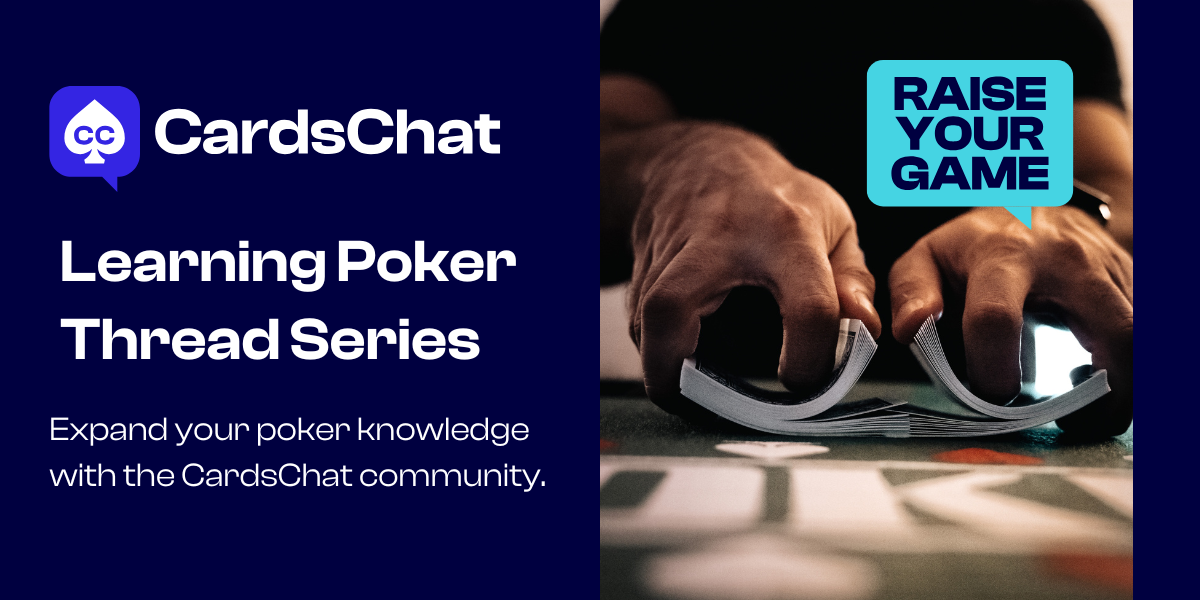CRStals
Moderator
Moderator
🃏 CardsChat Learning Series | Part 4 of 5 – Heads-Up Strategies: Playing the Big Blind
After covering play from the button — the most powerful position in heads-up poker — it’s time to shift focus to the big blind (BB).This position comes with more variables and tougher decisions. While aggression and reading your opponent remain key, playing out of position post-flop against such a wide range introduces extra risk — and that’s exactly what we’ll break down here.
🔍 What We’ll Cover
- 💥 Why You Should Almost Never Fold the Big Blind
- 🎯 When to Three-Bet (and How Often)
- 🔢 Hand Range vs. Stack Size vs. Three-Bet Size
- ⚠️ Common Mistakes from the Big Blind
💥 Why You Should Almost Never Fold the Big Blind
When playing heads-up, a few key factors make folding your big blind a costly mistake:- You’re already invested
You’ve got 1 BB in the pot. Folding hands over and over hands your opponent free chips — and in heads-up, small swings add up fast. - You’re getting great odds
Even if your opponent raises to 3BB, you’re getting 2-to-1 on your call — needing only ~25% equity to continue. Combine that with their wide raising range, and folding becomes too tight. - You’ll become exploitable
Fold too often, and your opponent will start attacking your blind relentlessly. You need to defend enough to keep them honest. - Folding gives away information
You can’t learn about your opponent’s tendencies if you’re constantly folding. Seeing flops and playing post-flop provides valuable intel you can use later to exploit weaknesses.
💥 When to Three-Bet (and How Often)
Understanding your opponent’s button raising frequency is the foundation for adjusting your defense.- Versus aggressive opponents:
If they’re raising nearly every button, it’s time to increase your three-bets — especially from both the top and bottom of your range. Make them think twice before raising light. - Versus tighter opponents:
If they’re folding multiple buttons per orbit, tighten up your three-bets. When they do play, it’s often stronger than average. Avoid inflating pots out of position against a tight range.
You should be three-betting from the big blind roughly every 4–5 hands — more often against wide raisers, less against tight ones.
If you aren’t three-betting at least 20% of the time, you’re likely being exploited.
👉 Tip: Mix in hands from the top and bottom of your range (e.g., 4♦5♣ offsuit or pocket kings). Balance is everything — don’t give away information.
💥 Hand Range vs. Stack Size vs. Three-Bet Size
Your big blind range should be very wide. Outside of the weakest hands (think 7♣2♦ or 8♠3♥), you should be defending nearly everything.Stack Size Matters:
- Deep stacks: Harder to realize equity post-flop. Be more selective about calling and avoid overly passive lines.
- Shallow stacks: Defend even wider — sometimes shoving is the optimal play.
Three-Bet Sizing Guidelines:
Adjust based on your opponent’s raise size.- If they min-raise, go 8–8.5BB.
- If they raise to 2.5BB, go 9–10BB.
⚠️ Common Mistakes from the Big Blind
Avoid these traps when playing heads-up from the BB:- Folding too much
You simply can’t afford to fold away chips heads-up. Defend relentlessly. - Calling too much
While calling has its place, over-calling without mixing in three-bets leaves you readable and passive. - Not check-raising enough
Balance is key. Don’t go from aggressive pre-flop to passive post-flop. Mix in check-raises and leads to keep your opponent guessing and protect your equity.
🎯 Summary
Heads-up poker is intense — you’re playing every hand, every orbit.When you don’t have positional advantage, focus on being balanced, aggressive, and unpredictable. That’s how you protect your chips and win pots out of position, which is everything in a heads-up battle.
💬 Join the Discussion
How do you approach defending your big blind heads-up?What mistakes have you made or seen others make in this spot?
Share your thoughts below — let’s help each other sharpen our edge in one of poker’s trickiest positions.
🔔 Subscribe to the CardsChat Learning Series
Never miss the next drop in our poker education series.Turn on notifications and keep leveling up — one position at a time.
👉 Check out the full guide here --> CardsChat Learning Poker Thread Series Guide
















